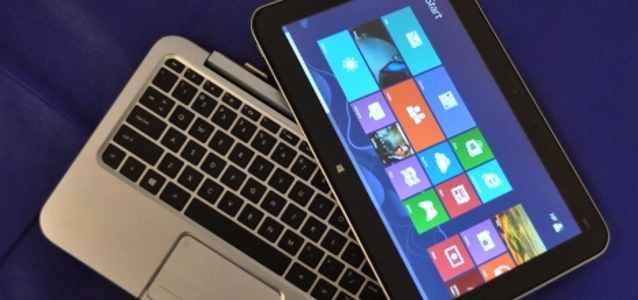
© HP (illustration purpose only)
General |
Cost comes First!
Despite of the freshness of touch NBs, the relatively high price has been the obstacle to lift the sales.
WitsView indicates that lowering prices will be the strategy core to promote touch NBs this year, and cutting the OGS touch module cost will be the key to reach that goal. In addition to cutting prices of key components and driving up yield, the choices of materials and structures help press down OGS costs.
According to WitsView research director Eric Chiou, compared to the tablet and the smart phone that also carry touch modules and are operated on the move, the NB is used in fixed places during most of time, and it reduces the risk of being dropped with lower mobility.
On the other hand, as the touch module is mostly protected in the clam-shell case, the strength requirement for NB OGS is clearly lower than that for other mobile devices, which naturally makes the cheaper Soda-lime glass become the mainstream for NB OGS glass.
Contrarily, the Alkali-Aluminosilicate glass, such as Corning’s Gorilla, that was the long-term forerunner in the cover lens market now sees difficulties to sell under the cost-oriented atmosphere due to its 4-to-5 time prices than that of the Soda-lime glass.
Besides, the secondary strengthening, aiming to compensate the OGS strength, is less required as the NB OGS with several cutting edges is not exposed externally but protected in the case. The glass alternative and the remove of secondary strengthening make a $3-$5 difference, undoubtedly a short-cut for brands to save costs.
Chiou adds that the application of the direct bonding also affects the touch NB costs largely. Compared to the air bonding, the direct bonding on one hand improves the display effect and on the other hand reduces the thickness.
However, as the direct bonding yield hasn’t reached maturity yet and its current price is as high as $1.2 per inch with its 80%-90% yield and the panel touch module waste included. The price is 4-6 time higher than the $ 2-4 for the air bonding and forces many brands to quite the direct bonding and use the air bonding.
Although certain panel makers use 100% direct bonding to sell the solution combining in-house panels plus touch, the relatively expensive direct-bonding is less used to NBs this year with a proportion of only 34%.
Brands are gradually aware the economically reasonable pricing is more practically useful than the high-end positioning to open the touch NB market, WitsView concludes. Touch NB’s additional costs are mostly from the touch module, and hence, the lower-priced OGS touch module will be definitely a positive factor to the touch NB popularization.
